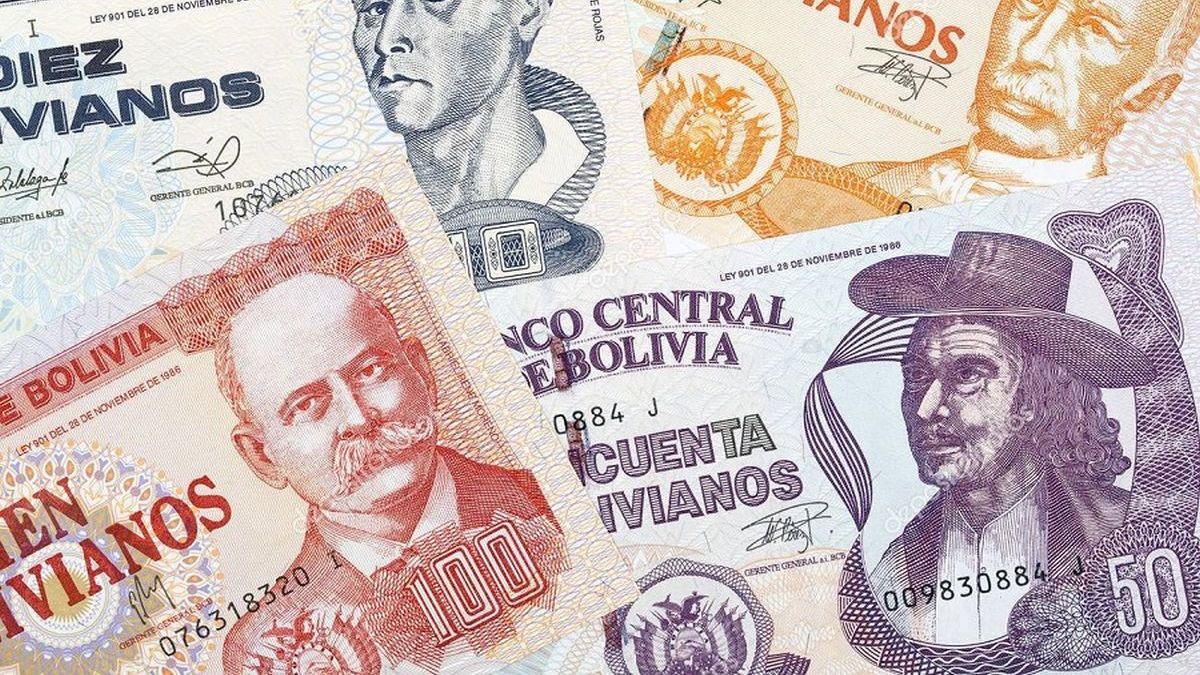Given the devaluation and jumps in the Argentine economy, bolivia It has been proving to be an example in terms of economic direction. Virtually zero inflation levels and a strong local currency are the clearest example of why Argentines regard the Bolivian peso with affection, as a refuge of value due to inflation and restrictions on the purchase of the legal dollar.
The dollar
This phenomenon is manifested in Jujuy, especially in the border areas that join La Quiaca-Villazón; in Salvador Mazza; Pocitos-San Jose de Pocitos; and in Salta, by Aguas Blancas-Bermejo. The Bolivian peso is strong. Today, $b1 today is equivalent to $33 Argentineans. 10 years ago, $2 Argentineans were equivalent to $b10.
Since November 2011, the Bolivian peso maintains a relationship with the dollar for which $1 equals $b6.96. The gap in the neighboring country is 10 cents between the dollar for purchase and sale, where the former operates at $b6.86 and the latter at $b6.96. In the same period, meanwhile, the Argentine peso devalued from $4.09 per dollar to the current $273, taking the blue price.
In the timeline of evolution of the price of the dollar in Bolivia, already in 2017, US$1 was obtained at 6.81 Bolivian pesos. Currently, one dollar is available at $b6.87that is, in just five years, with a political crisis in the neighboring country, added to the effects of the pandemic, the US currency depreciated just 6 cents.
Inflation
Merchants in the Argentine border areas with Bolivia warn that it is a cyclical process: faced with the weakness of the national currency, the demand for Bolivian pesos to buy goods in Argentina also grows. So much so that in our country, you can buy all kinds of products up to 50% cheaper. This means that they welcome those consumers who pay in Bolivian currency with open arms.
On the other side of the border, the scene is totally different. In Bolivia they reject Argentine pesos, or they accept them at a very inconvenient exchange rate.
The interannual inflation of Bolivia, taking as reference the period May 2021 – May 2022, was 1.43%. In the same period, Argentina accumulated 60.7%. As most of the food and beverages are part of the exchange in foreign trade, the real devaluations of Chile and Peru and the distorted prices of Argentina, had a downward impact on Bolivian inflation.
Bolivian citizens cross into Argentina to buy all kinds of products: fats, oils, beverages, tires, technology and hygiene items. Alejandro Bustamente, vice president of the Jujuy Chamber of Commerce, agrees that “the exchange rate favors Bolivia.” “Our currency is quite depreciated and for Bolivians it is convenient to buy food such as flour and noodles in Argentina. Entire trucks pass with merchandise, ”he explained in a note to the Bloomberg agency.
The Bolivian peso as a refuge against inflation and the stocks on the dollar
In recent times, it is noted that many citizens save in Bolivian pesos because it is difficult to obtain dollars. Many choose to buy the currency of the neighboring country, so its demand increased considerably.
Today, one Bolivian peso is equivalent to 33 Argentine pesos. In this way, after the latest increases in the North American currency in the parallel market, increasingly in demand due to exchange restrictions in the local market, the price that could be found inra from $1 to $b0.030.
The border area between Argentina and Bolivia It has, historically, a high commercial traffic. On one side and the other, the “bagayeros” carry and bring merchandise of all kinds. Humble people cannot buy dollars, so the Bolivian peso is the refuge to buy cheaper.
Source: Ambito
David William is a talented author who has made a name for himself in the world of writing. He is a professional author who writes on a wide range of topics, from general interest to opinion news. David is currently working as a writer at 24 hours worlds where he brings his unique perspective and in-depth research to his articles, making them both informative and engaging.




